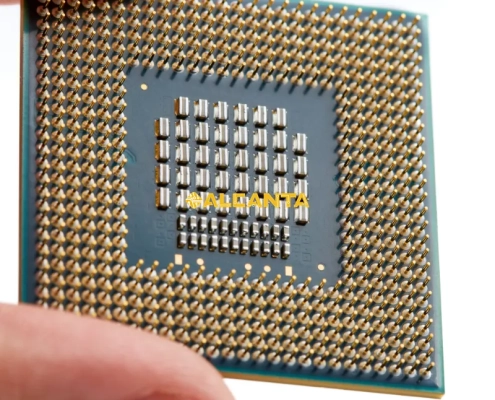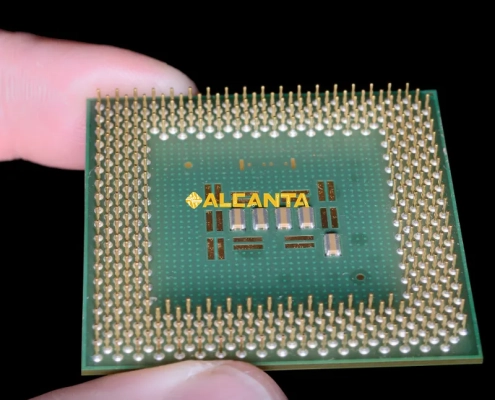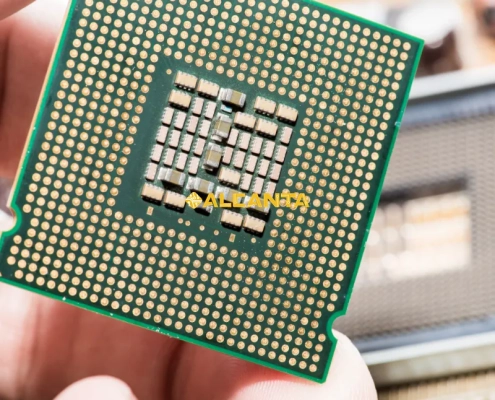Decoding Module Substates: Reshaping Tech Architecture
Opening: Module Substates represent a paradigm shift in the tech sphere, revolutionizing how systems are designed and managed. Their significance lies in their ability to offer unprecedented flexibility and scalability, addressing the ever-evolving needs of modern technology. Essentially, Module Substates serve as dynamic components within software or system architecture, allowing for modularization and efficient resource allocation. This innovative approach not only enhances operational efficiency but also fosters adaptability in rapidly changing environments. By providing a framework for modular development and management, Module Substates empower organizations to streamline their processes, optimize performance, and stay ahead in today’s competitive tech landscape. In essence, they mark a pivotal advancement in the way systems are conceptualized, developed, and deployed, heralding a new era of technological innovation and progress.
What are Module Substates?
Modularity: Module Substates offer significant advantages in organizing and managing different modules within a system, leading to improved development, maintenance, and scalability:
- Clear Module Boundaries: Module Substates delineate clear boundaries between modules, making it easier to understand and manage the interactions and dependencies between different parts of the system. This clear separation enhances modularity and reduces the risk of unintended side effects when making changes to the system.
- Reusability: With Module Substates, modules are designed to be reusable components that can be easily integrated into different parts of the system or even across multiple projects. This reusability accelerates development cycles, reduces duplication of effort, and promotes a modular, component-based approach to software design.
- Simplified Maintenance: Module Substates simplify maintenance efforts by isolating changes within individual modules, minimizing the impact on the rest of the system. This modular approach streamlines troubleshooting and debugging processes, allowing developers to focus their efforts more effectively and minimize downtime.
Efficiency: Module Substates contribute to enhanced system operational efficiency and performance in several key ways:
- Reduced Overhead: By allowing modules to operate independently with their own set of states, Module Substates minimize the overhead associated with managing a monolithic system. This streamlined approach reduces complexity, improves system responsiveness, and lowers resource consumption.
- Optimized Resource Allocation: Module Substates enable dynamic resource allocation based on the specific needs of each module, allowing system resources to be utilized more efficiently. This optimized resource allocation ensures that critical tasks receive the necessary resources, maximizing overall system performance and throughput.
- Faster Time-to-Market: The modular architecture facilitated by Module Substates enables faster development cycles, as developers can work on individual modules concurrently without waiting for the entire system to be completed. This accelerated development process translates to shorter time-to-market for new features and products, giving organizations a competitive edge in rapidly evolving markets.
The modularity and efficiency provided by Module Substates contribute to more maintainable, scalable, and performant systems. By promoting clear module boundaries, reusability, and optimized resource allocation, Module Substates empower organizations to build robust, adaptable, and high-performing software solutions.
Development Trends
As technology continues to evolve, several development trends are expected to shape the future of Module Substates:
- Integration with Emerging Technologies: Module Substates are likely to integrate with emerging technologies such as artificial intelligence (AI), machine learning (ML), and blockchain. By leveraging these technologies, Module Substates can enhance their capabilities in areas such as intelligent automation, predictive analytics, and decentralized governance.
- Adoption of Microservices Architecture: Module Substates align closely with the principles of microservices architecture, which emphasizes building applications as a collection of loosely coupled, independently deployable services. As microservices gain traction, Module Substates are expected to become a fundamental building block for developing scalable, resilient, and agile systems.
- Evolution of DevOps Practices: Module Substates promote modularity, flexibility, and automation, which are core principles of DevOps practices. In the future, Module Substates are likely to play a pivotal role in enabling continuous integration, continuous delivery (CI/CD), and infrastructure as code (IaC) workflows, thereby accelerating the pace of software development and deployment.
Potential Impact
The potential impact of Module Substates on future tech developments is profound and far-reaching:
- Enhanced System Flexibility and Resilience: Module Substates enable systems to adapt dynamically to changing requirements and conditions, enhancing their flexibility and resilience. This adaptability is crucial in an increasingly volatile and uncertain business environment, where organizations need to respond quickly to market dynamics and customer demands.
- Accelerated Innovation and Time-to-Market: By promoting modular design, reusability, and automation, Module Substates streamline the software development process and reduce time-to-market for new products and features. This accelerated innovation cycle enables organizations to stay ahead of competitors and seize opportunities in rapidly evolving markets.
- Democratization of Technology: Module Substates democratize access to advanced technology by providing modular building blocks that can be easily integrated into various applications and systems. This democratization empowers developers, entrepreneurs, and innovators to create custom solutions tailored to their specific needs, driving innovation and diversity in the tech ecosystem.
Module Substates have the potential to revolutionize how systems are designed, developed, and deployed, shaping the future of technology across industries. By embracing modularity, flexibility, and automation, organizations can unlock new opportunities for innovation, growth, and competitive advantage in the digital age.
Contact Us NOW
FAQs About Module Substates
What are Module Substates?
Module Substates are granular states within modules, enabling fine-grained control over component behavior in software or system architecture.
How do Module Substates enhance flexibility?
Module Substates allow systems to adapt dynamically to varying needs and conditions by providing dynamic state management within modules.
Can Module Substates support system scalability?
Yes, Module Substates support system scalability by facilitating modular expansion and optimized resource allocation, allowing systems to grow and evolve.
What advantages do Module Substates offer in modularity?
Module Substates promote modularity by organizing and managing different modules within a system, leading to improved development and maintenance.
How do Module Substates enhance operational efficiency?
Module Substates optimize resource utilization, streamline maintenance efforts, and reduce system overhead, resulting in improved operational efficiency and performance.
What application scenarios exist for Module Substates in the tech industry?
Module Substates find applications in software development, system architecture, and other tech sectors where modularity and scalability are critical.
Are Module Substates applicable outside the tech industry?
Yes, Module Substates hold potential applications in various sectors like healthcare, finance, and beyond, where scalability and adaptability are valued.
What does the future hold for Module Substates?



